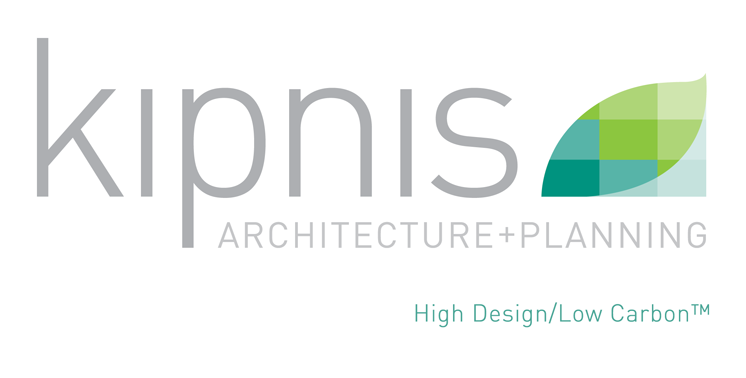Sustainable Design Process
2030 Commitment
The AIA 2030 Commitment is a national initiative to help firms evaluate the impact that design decisions have on a building’s energy performance, with the goal of producing net zero buildings by 2030. aia.org/resources/202041-the-2030-commitment
Since 2009, Kipnis Architecture + Planning has been an early advocate and practitioner of the 2030 Commitment. KAP provides energy modeling for significant projects in the office. We report our design’s predicted Energy Use Intensity (pEUI) to the 2030 Commitment and reference our past work for ways to improve the energy efficiency of our current designs.
Early Design Energy Modeling
Before we begin designing, we carefully study the site, context and local microclimate to see which architectural strategies may be best suited for the project. We then utilize energy modeling software early in the design process to assess the energy usage impact of our decisions to optimize performance.
Sustainable Energy Concepts
Our strong preference is to design homes and significant renovations as all electric, as electricity is the ‘currency’ of renewable energy. In fact, many of our current designs do not have a natural gas connection to the house. To accomplish this, we use electric heat pump mechanical systems, a heat pump clothes dryer, and an induction cooktop. This allows us to eliminate fracked natural gas on site.
Passive Strategies
The most cost effective way to improve a building’s energy efficiency is to look into passive strategies, ones that come from the architectural forms of the buildings. Next to making the building the correct size, this is a very powerful way to optimize energy use. Natural ventilation and natural daylighting are key hallmarks of our work. Another concept that we favor, where appropriate, is providing correctly sized overhangs to naturally shade the building and reduce the solar load in the summer while still allowing the low winter sun into the building for passive solar heating.
Great examples of energy efficient homes tend to be the classic regional designs from a particular climatic zone, which have evolved over generations of trial and error, which have culminated in a perfectly balanced synthesis of form and function. Even modern designs can and should take cues from this historic knowledge to inform their designs.
Optimized Building Perimeter and Mechanicals
Best practice air sealing, high r-value perimeter components and high efficiency mechanical ventilation systems are combined to produce the tight perimeter shell that is required for high performance design. Mobile apps can control key systems including the thermostats, LED lighting systems, audio/video and security.
Renewable Energy Systems
After the above techniques have been employed, renewable energy systems are the final piece that can offset all or part of the remaining energy load. Solar photovoltaics (PV) are our preferred on-site energy system. Home scaled cost effective battery storage systems are now available. It is now possible to not only store the energy produced by the PV’s, but to strategically offset electric power from the grid when it is either the most expensive or ‘dirtiest’.
Energy Modeling Presentations
Mr. Kipnis lectures and provides seminars nationally on how small firms can integrate energy modeling into their practice to help meet their energy efficiency project goals and the 2030 Commitment. For information on arranging a speaking engagement, contact info@kipnisarch.com.



